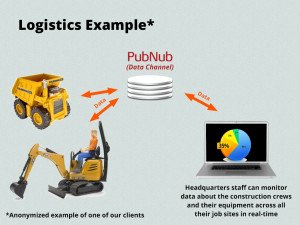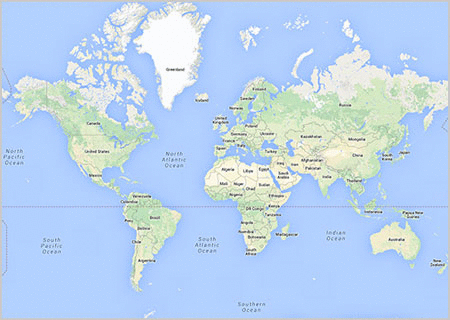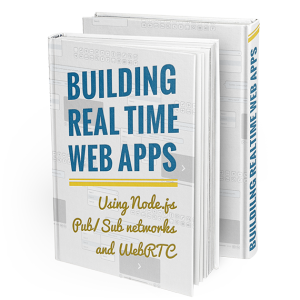What good is «Big Data» if it’s old and out of date? Data analysts and enterprises are finding more needs for real-time insights into their data, not just historical views into data. The term «historical data» is very relative of course, but in an increasing number of uses cases, data from yesterday or even an hour ago is very historical. Every minute you can’t act on data is a minute of business or customer value lost.
A recent article in UX Magazine highlighted the «Future of Information Dashboards», by Shilpi Choudhury, and I’m glad to see that real-time data was one of the predictions she highlighted for 2014.
Who needs real-time data in their analysis toolkit? The odds are that you do, but it may require thinking outside of the way you are used to visualizing and acting on data currently. To help you consider some new possibilities, here are five use cases our team has seen where building in real-time to your data dashboard can allow you to make business decisions faster.
1) Looking for System problems in Real-Time
Catching errors on your website is certainly one way to know that something is going wrong. Shilpi’s article gives a good example of this by talking about highlighting payment system failures on a real-time dashboard helps businesses to track key performance metrics. If there is a sudden increase in credit card declines, that could be an indication that something is wrong with your payment processing gateway. It could also be an indication that there is some fraud occuring that you need to be concerned about.
AgilityFeat COO Ford Englander and I used to work in the music industry, and we worked together on IT systems for online ticket sales. When an «On Sale» starts for a big music artist, there are a lot of people clamoring to get the best tickets. Not all of them are legitimate ticket buyers – many of them are ticket scalpers who may be using automated programs to try and snap up the best seats quickly so they can resell them above face value. A real-time analytics dashboard can help you to see what’s happening right now. When a concert sells out in mere minutes, then if you need to take any actions like banning certain users or IP addresses from purchasing more tickets, you need to be able to see the data and make that decision right away.
2) Real-Time view into customer/data segments
 We’re building some interesting software for one of our customers that is basically a very sophisticated real-time business intelligence and data dashboard application. I have to describe the application somewhat generically, since it’s not public yet unfortunately. This client is in the logistics industry, and the software will be deployed at multiple company locations to allow them to see the current status of all their operations in real-time. To reallocate the activities of all their different locations, they need a real-time view into the data. The dashboards will often run on large touchscreen displays that allow people to customize the view to areas of most interest to them.
We’re building some interesting software for one of our customers that is basically a very sophisticated real-time business intelligence and data dashboard application. I have to describe the application somewhat generically, since it’s not public yet unfortunately. This client is in the logistics industry, and the software will be deployed at multiple company locations to allow them to see the current status of all their operations in real-time. To reallocate the activities of all their different locations, they need a real-time view into the data. The dashboards will often run on large touchscreen displays that allow people to customize the view to areas of most interest to them.
3) Real-Time view into geo-tagged data
 Incorporation of geo-tagged data into data dashboards is another growing trend that Shilpi mentions in her article. Why not combine that geo-location information with real-time data. We built a simple example of this using the Meetup streaming API here. This is an example we use in our upcoming book on building real-time web applications. In this example, we show the location of RSVP’s to Meetup events in real-time. Meetup did the hard work of streaming the data out to a free API (thank you!), we are just mashing this up with google maps in our example. I doubt that Meetup will be using our example to make any actionable decisions, but it’s at least fun to watch for a while and you’ll notice the activity shift around the world depending on the time of day. Another cool example we saw is this real-time bitcoin globe, which shows bitcoin transactions happening around the world as they happen.
Incorporation of geo-tagged data into data dashboards is another growing trend that Shilpi mentions in her article. Why not combine that geo-location information with real-time data. We built a simple example of this using the Meetup streaming API here. This is an example we use in our upcoming book on building real-time web applications. In this example, we show the location of RSVP’s to Meetup events in real-time. Meetup did the hard work of streaming the data out to a free API (thank you!), we are just mashing this up with google maps in our example. I doubt that Meetup will be using our example to make any actionable decisions, but it’s at least fun to watch for a while and you’ll notice the activity shift around the world depending on the time of day. Another cool example we saw is this real-time bitcoin globe, which shows bitcoin transactions happening around the world as they happen.
These examples may seem more fun than actionable, but depending on your business they could be incredibly powerful. For example, when I was in business school one of our case studies was how Walmart looks at sales across its stores worldwide in real-time. This allows them to realize right away when a particular product is selling unexpectedly well in a certain market. This could lead to an inventory shortage that could not have been predicted, and therefore potentially lost sales. Maybe a big school district just asked all their students to go buy styrofoam balls for a solar system model project. Walmart can catch this before the stores in that area run out of inventory and get extra product shipped there right away.
4) Internet of Things and sensor data
That FitBit band on your arm is just one example of the many different devices starting to permeate our daily lives which have internet connectivity and stream data back to some server somewhere. It might just be data about your latest workout, your fridge asking you to buy more milk, or something spanning thousands of devices across a factory floor or all of a company’s locations.
 When I first ventured into freelance software development over a decade ago, one of my first clients was a small company called Avir Sensors. Avir makes a cool chemical detection system that can be used in government buildings, public transport, or the factory floor. I may not have been smart enough to understand the extreme math used to match chemical signatures in an air duct in real-time, but I was smart enough to build the first prototype of the interface software to those sensors. I climbed down into strange tunnels at the University of Virginia with other engineers, we placed a detector, and then we could pull up a web page back in the lab where we saw the data displayed in our browser in real-time. Eventually, fancier software was built to manage an array of devices in a building at once, trigger alerts when a dangerous chemical was detected, control the devices in real-time, and monitor data in real-time from any particular device.
When I first ventured into freelance software development over a decade ago, one of my first clients was a small company called Avir Sensors. Avir makes a cool chemical detection system that can be used in government buildings, public transport, or the factory floor. I may not have been smart enough to understand the extreme math used to match chemical signatures in an air duct in real-time, but I was smart enough to build the first prototype of the interface software to those sensors. I climbed down into strange tunnels at the University of Virginia with other engineers, we placed a detector, and then we could pull up a web page back in the lab where we saw the data displayed in our browser in real-time. Eventually, fancier software was built to manage an array of devices in a building at once, trigger alerts when a dangerous chemical was detected, control the devices in real-time, and monitor data in real-time from any particular device.
5) In-context Communications
 All of the examples I’ve given so far are focused on the data itself, but what about the communications around that data? As you’re going over the latest sales data on the real-time dashboard, why not call up the district sales manager for a video chat? You can use WebRTC technologies to build in data synchronization, video/audio chat, and screen sharing directly into your application so that you can make decisions with your peers in real-time while looking at the same exact data together. There’s no more «flip to slide 24 in my presentation and look at the top chart.» I’m just going to show you the data in real-time, and we can manipulate and slice it together to get exactly the data we need to make a decision now.
All of the examples I’ve given so far are focused on the data itself, but what about the communications around that data? As you’re going over the latest sales data on the real-time dashboard, why not call up the district sales manager for a video chat? You can use WebRTC technologies to build in data synchronization, video/audio chat, and screen sharing directly into your application so that you can make decisions with your peers in real-time while looking at the same exact data together. There’s no more «flip to slide 24 in my presentation and look at the top chart.» I’m just going to show you the data in real-time, and we can manipulate and slice it together to get exactly the data we need to make a decision now.
What will you build?
In today’s fast-paced business world, waiting for the next quarterly or even weekly sales meeting is no time to review data. You need to act on that data now, in real-time.
Strategy decisions still need to be made on a longer time scale, but the tactical decisions to execute your strategy must be made much faster. Make 2014 the year that you start accessing your data in real-time, and making business decisions while they still matter.
 Interested in learning more about Real-Time data and building real-time web applications? Then you’ll be interested in our free weekly newsletter Real Time Weekly, which provides a round up of the best news about real time web application technologies. You should also check out our book for building Real-Time Web Applications. And you can always contact us to learn more about how we can help your team build real-time applications!
Interested in learning more about Real-Time data and building real-time web applications? Then you’ll be interested in our free weekly newsletter Real Time Weekly, which provides a round up of the best news about real time web application technologies. You should also check out our book for building Real-Time Web Applications. And you can always contact us to learn more about how we can help your team build real-time applications!

Recent Comments